A human powered carousel
What and Why
Along with two of my friends, we designed and built this carousel ride. This project is my biggest project so far. I have never designed anything human sized before. To be honest, I was a little nervous about this process because people can get hurt. However, I worked along with very capable friends who gave me a lot of advices.
For our school’s Residence Exploration Period , we built a swinging carousel ride. Our goal was to create a safe and fun ride that will attract people to come live at our dormitory (freshman get to chose what dorm they want to live in after exploring all the dorms). The ride is human powered (two people walk around the platform and push) and can seat up to four riders. The seats are attached 7.5 feet from the center, but the riders spin out farther as #Yolo spins due to centrifugal force.
The Design
The ride is broken into 3 main parts:
-
A base stand with a large pipe sticking out of it.
The purpose of the base stand is to prevent the pipe from tipping over during operation or when the riders are getting on or off. Ideally, people of close to the same weight would sit opposite each other on the ride to prevent huge imbalances and torques. We realized that it wouldn’t always be loaded in perfectly ideal conditions, so we designed it to be able to withstand a 250lb-f difference in load at 1 rotation/4 seconds.
-
A platform that people can run on to push the carousel.
-
A rotating top that contains the swings that people sit on. This rotating top sits on top of the large pipe sticking out of the base stand.
Some Math
In the design, there are two big failure modes. They are all related to the central metal post. The buckling of the central post due to human load. The bending of the central post due to uneven loading.
#Define constraints for column calculation
E = 29e6; %PSI
F = 1000; %Pound
SF = 2; %safety factor
K = 1; %Column effective length factor
L = 3*12; %inch. Unsupported length
#Calculating for buckling failure
#Using a known column radius, solve thickness
R = 1.5
t = F*SF*(K*L)^2/(pi^2*E*pi*R^3)
To support our load, the central metal pipe has to be at least 8.5411e-04 inch, which is not very much. We ended up ordering a ~1/8 inch thick metal pipe, so it is extremely solid.
#Calculating for bending of central post due to uneven loading.
F1 = 400 # lb. Uneven Loading by one person
L1 = 72 # inch. Length of beam on top.
maxStress = (F1*L1*R)/pi*R^3*t;
#maxStress should be less than 1800 psi
The max stress on the column should be less than 1800 psi. In this uneven loading scenario of 400lb, the stress is only 39.6389 PSI, much less than max possible value.
Construction
The Base Stand
Long pipes are more expensive to ship than they are to buy. Luckily, there is a pipe supply store about 10 minutes from campus (Metropolitan Pipe and Supply in Boston). So we walked over there with a motorized dolley and purchased a 13 foot long metal pipe. The base is designed to keep the metal pipe upright. The pipe is inserted in a tall rectangular box which is supported with braces to the ground.
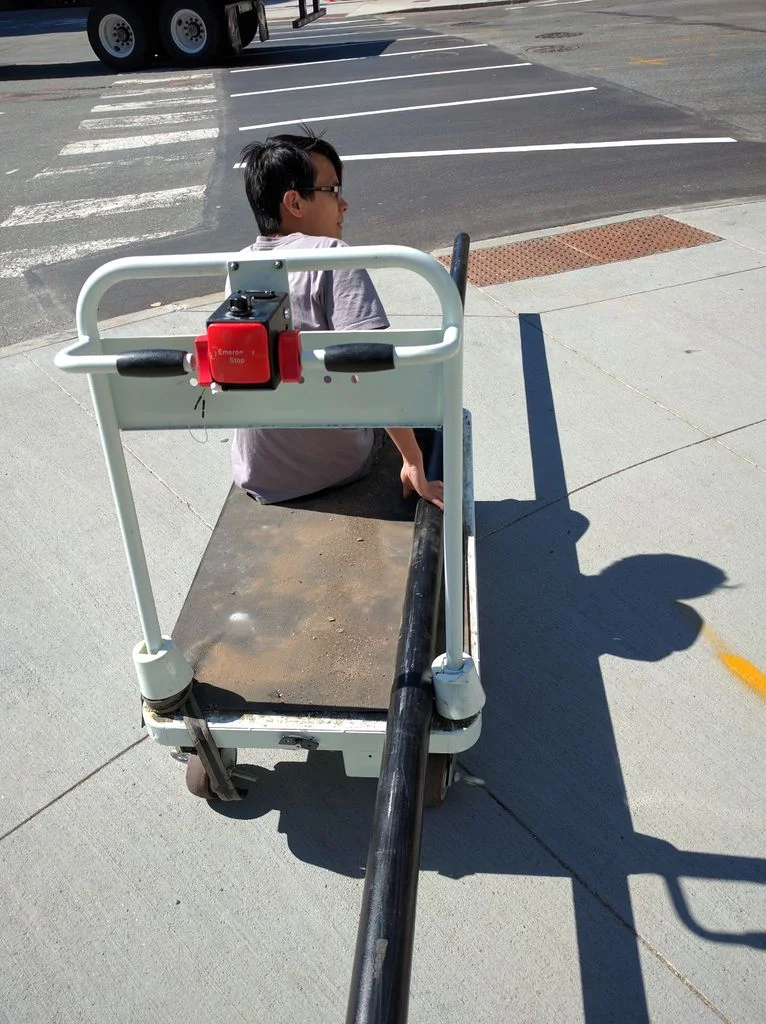 |
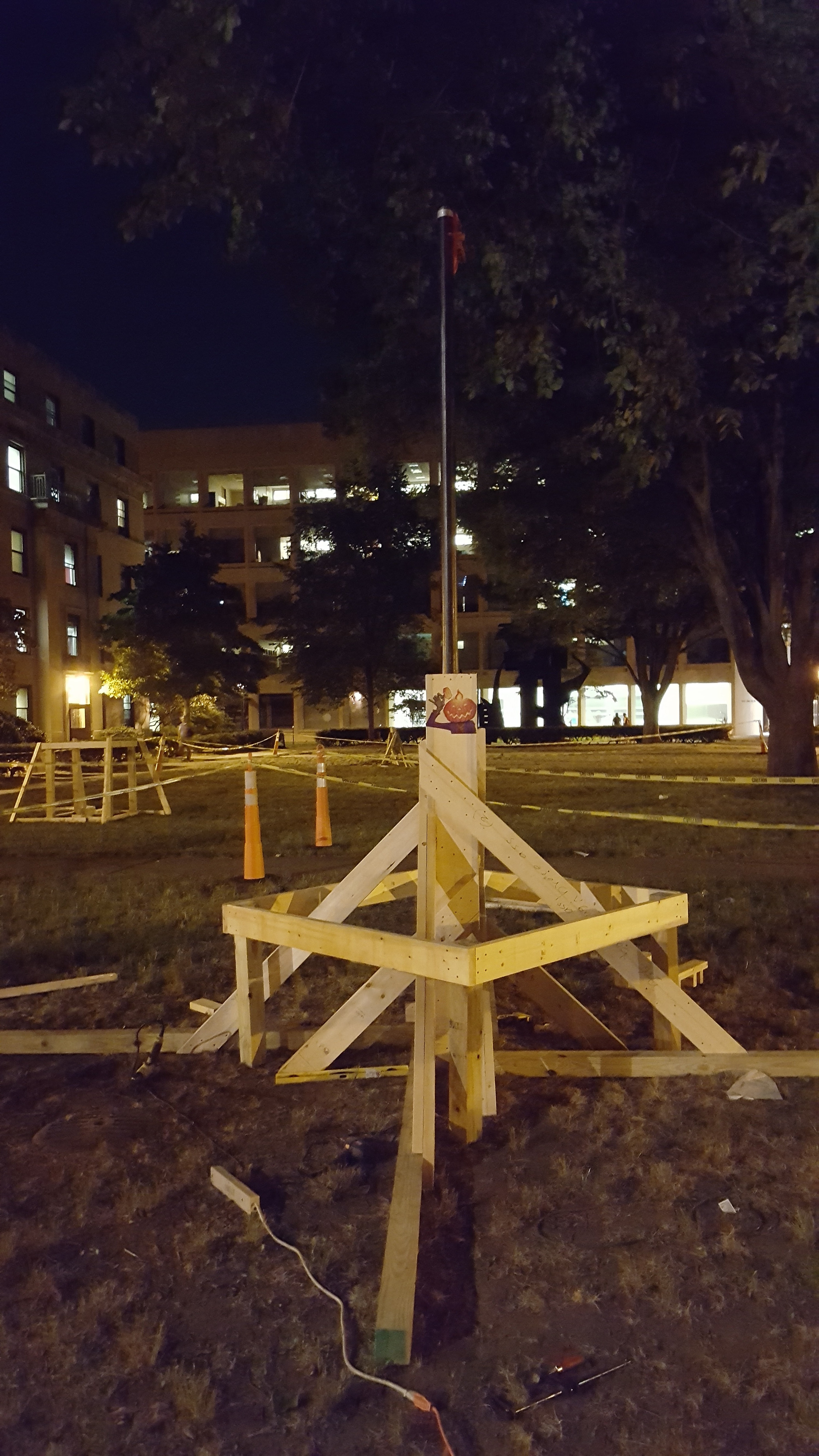 |
The Platform
The purpose of this platform is to give runners a smooth surface to walk on (the ride is outside on somewhat uneven ground) and to give the riders a nice point to get on and off from (the corners of the platform are the right distance from the center to allow the riders to get on and off easily.
The platform has 12 legs which are each made of 2-ft long 4x4s that support the entire assembly. The inner and outer squares are constructed of 2x6s, and 2x4 joists (yellow) are used for further bracing. Pieces of .75” thick OSB are used to make the actual part that people step on. We also found some old carpets that people threw out, so we added it for the aesthetics.
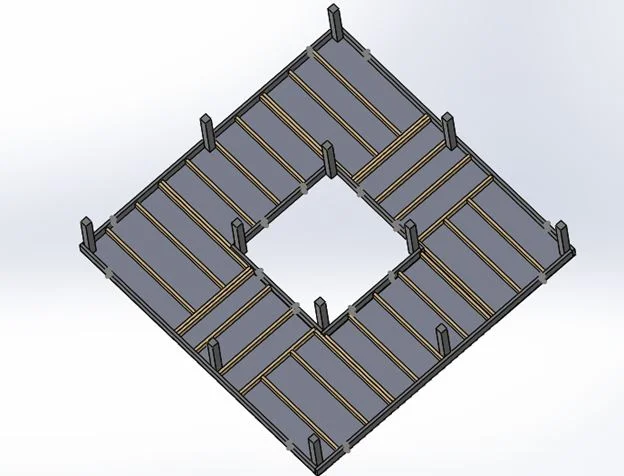 |
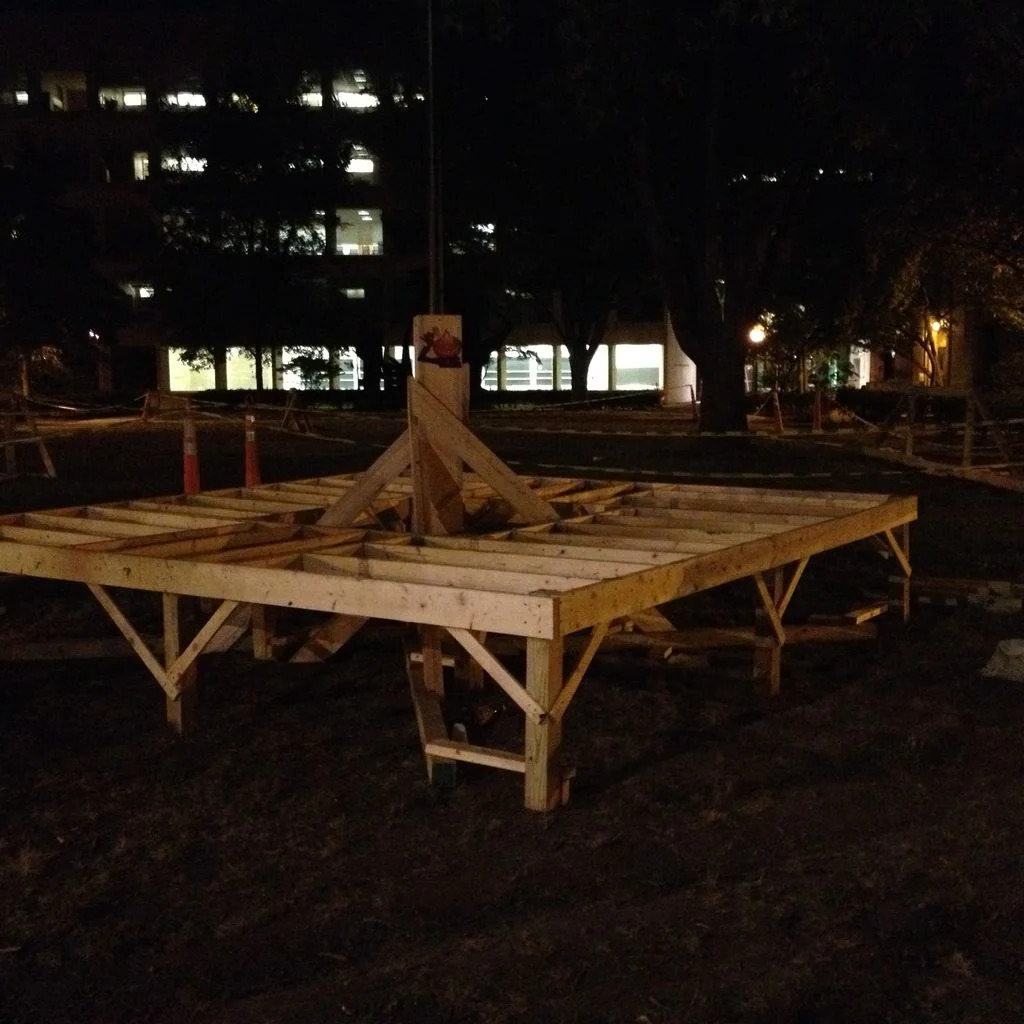 |
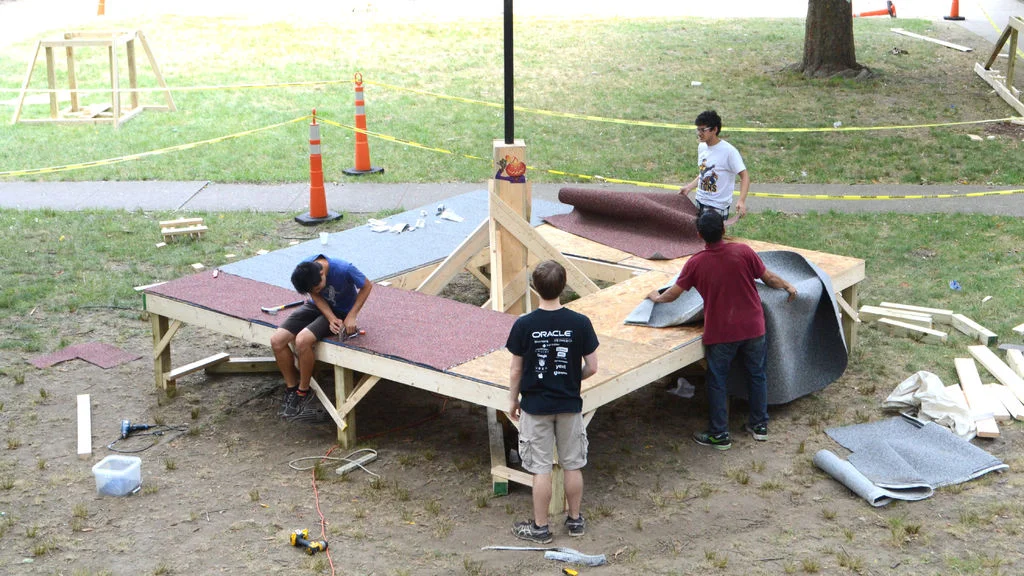 |
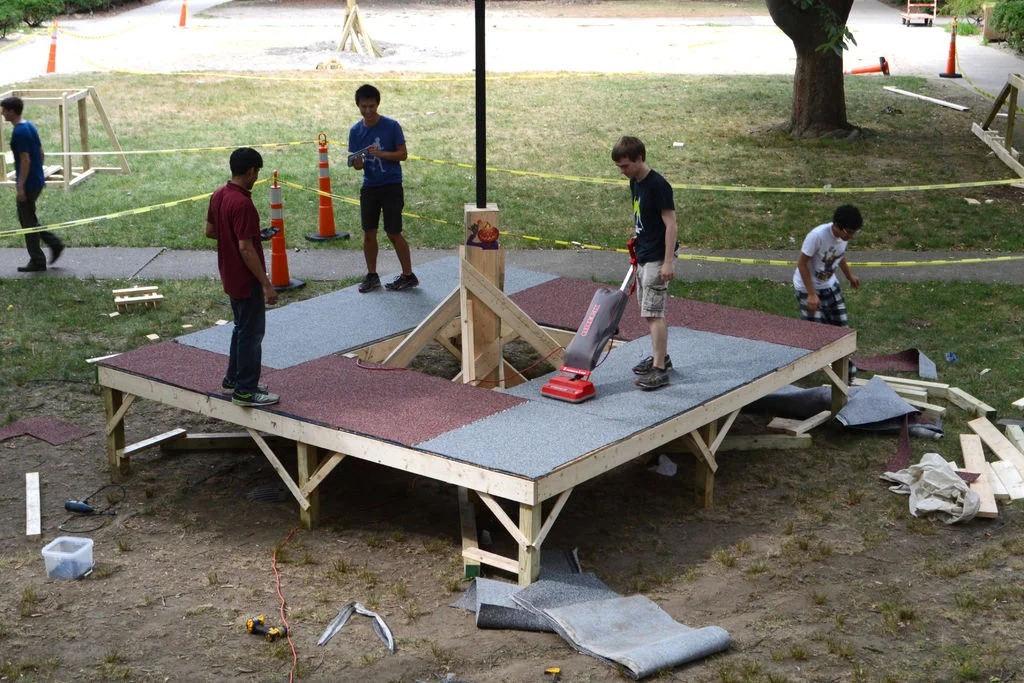 |
Spinning Top
The spinning top is designed to have four ropes hanging down for people to sit on. It also has two locations where people can push the it to spin the carousel. The design is essentially two long beams held together in a plus sign. The center of the plus sign holds a rectanglar tube standing perpendicular to it. The tube holds a radial bearing on the bottom and a thrust bearing up top. The tube is braced with the plus sign with diagonal beams.
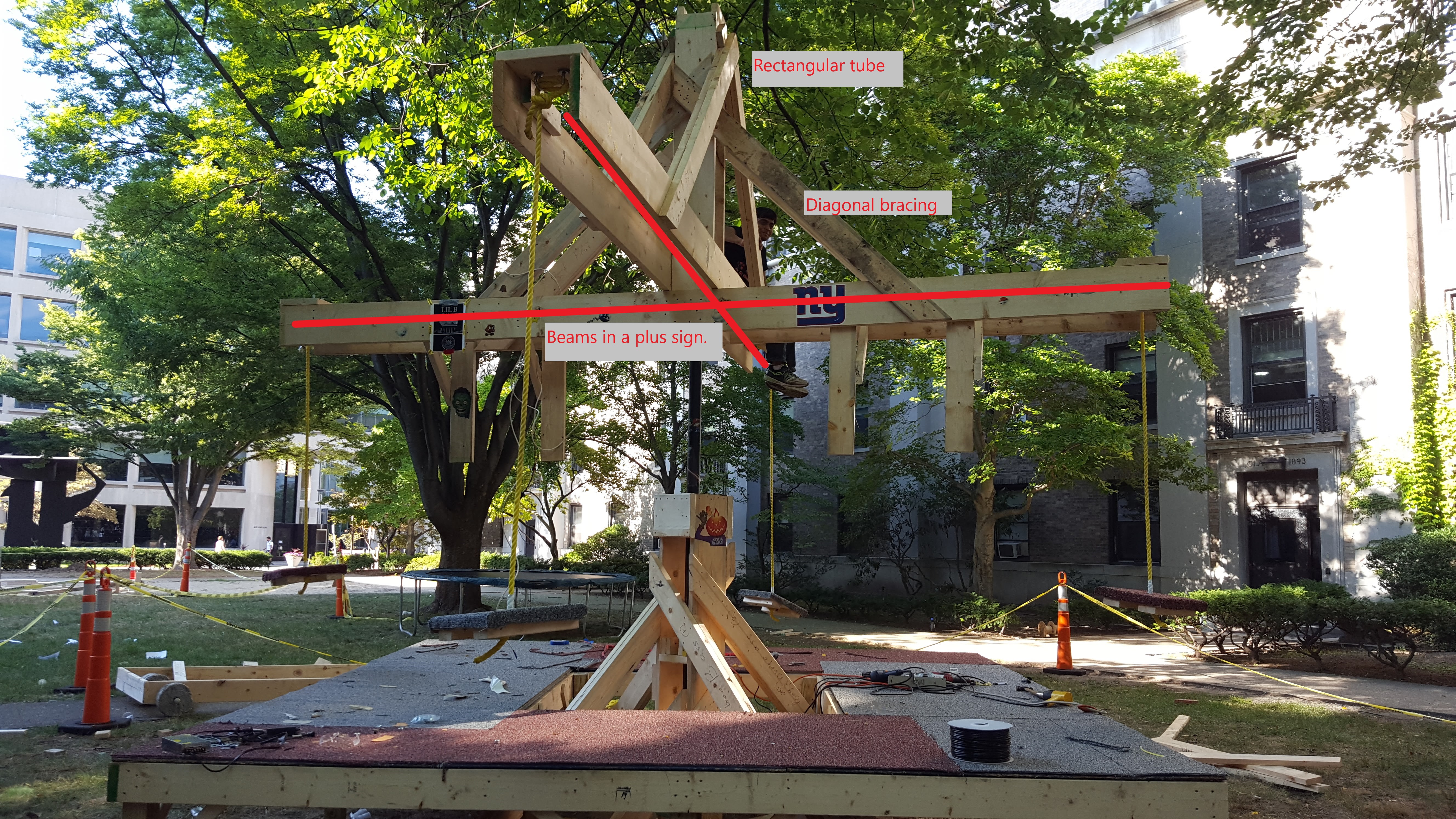
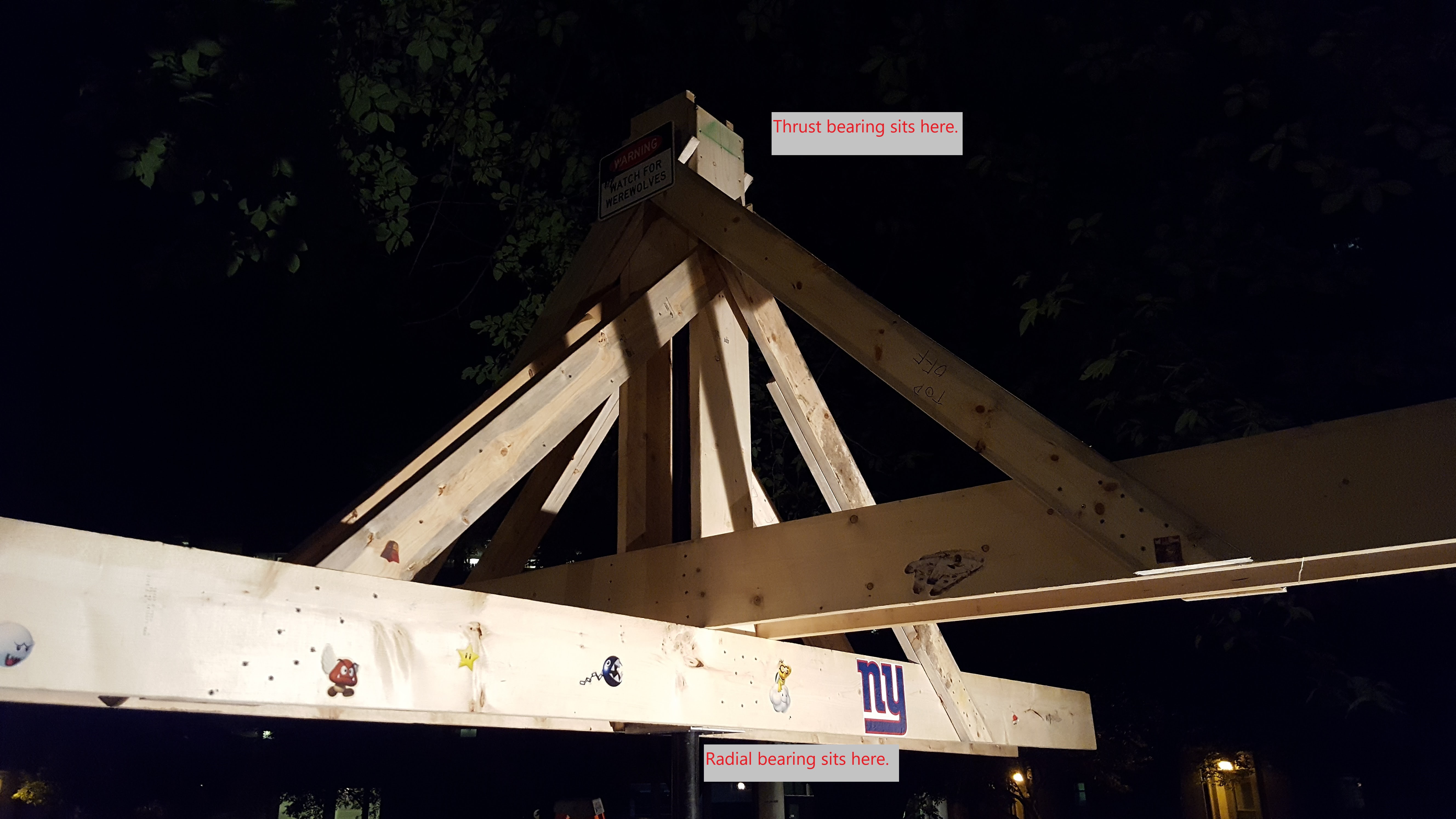
Here are closed-up pictures of where the bearings are located. The left picture is the thrust bearing. The right picture is the radial bearing.
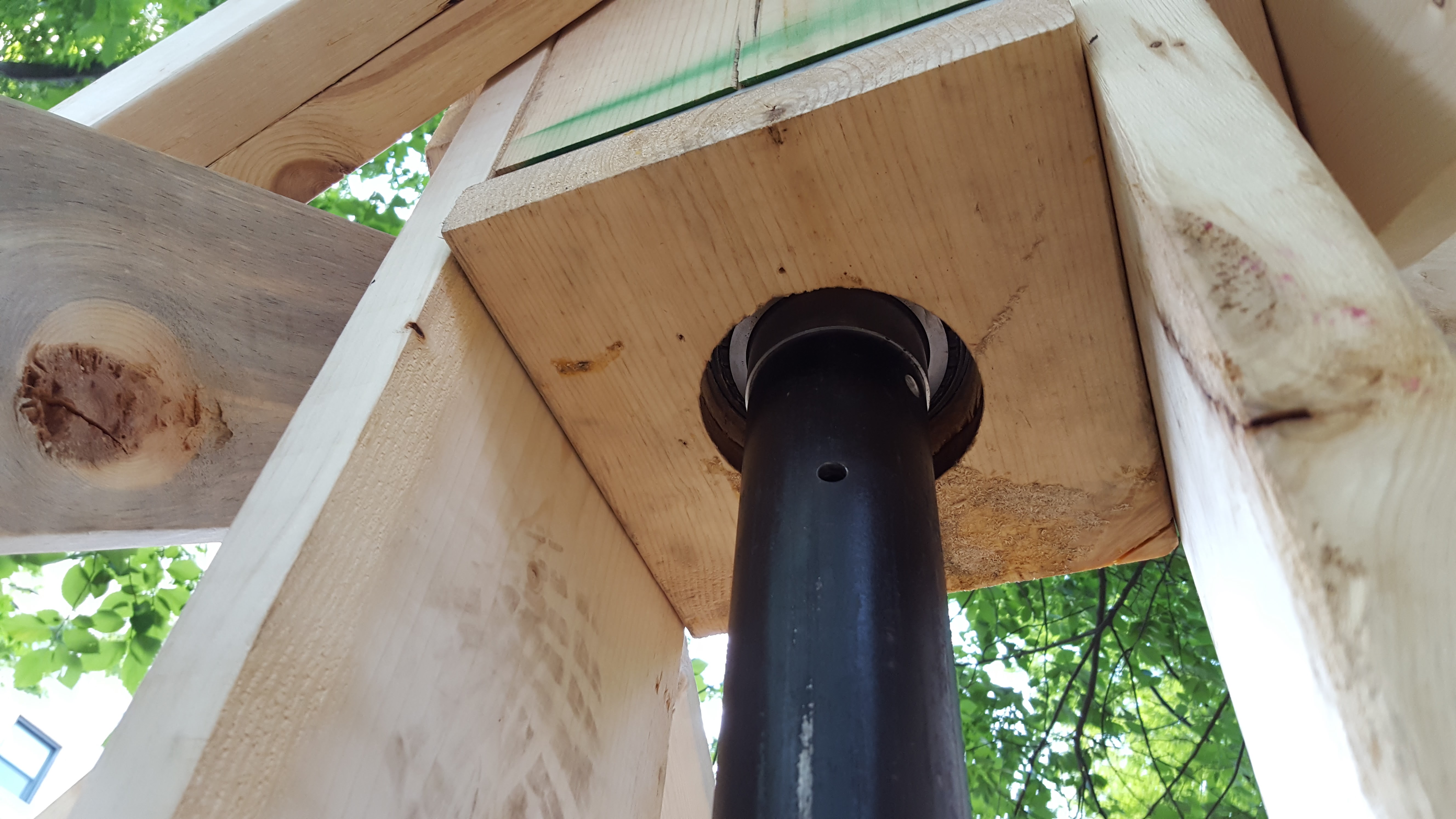 |
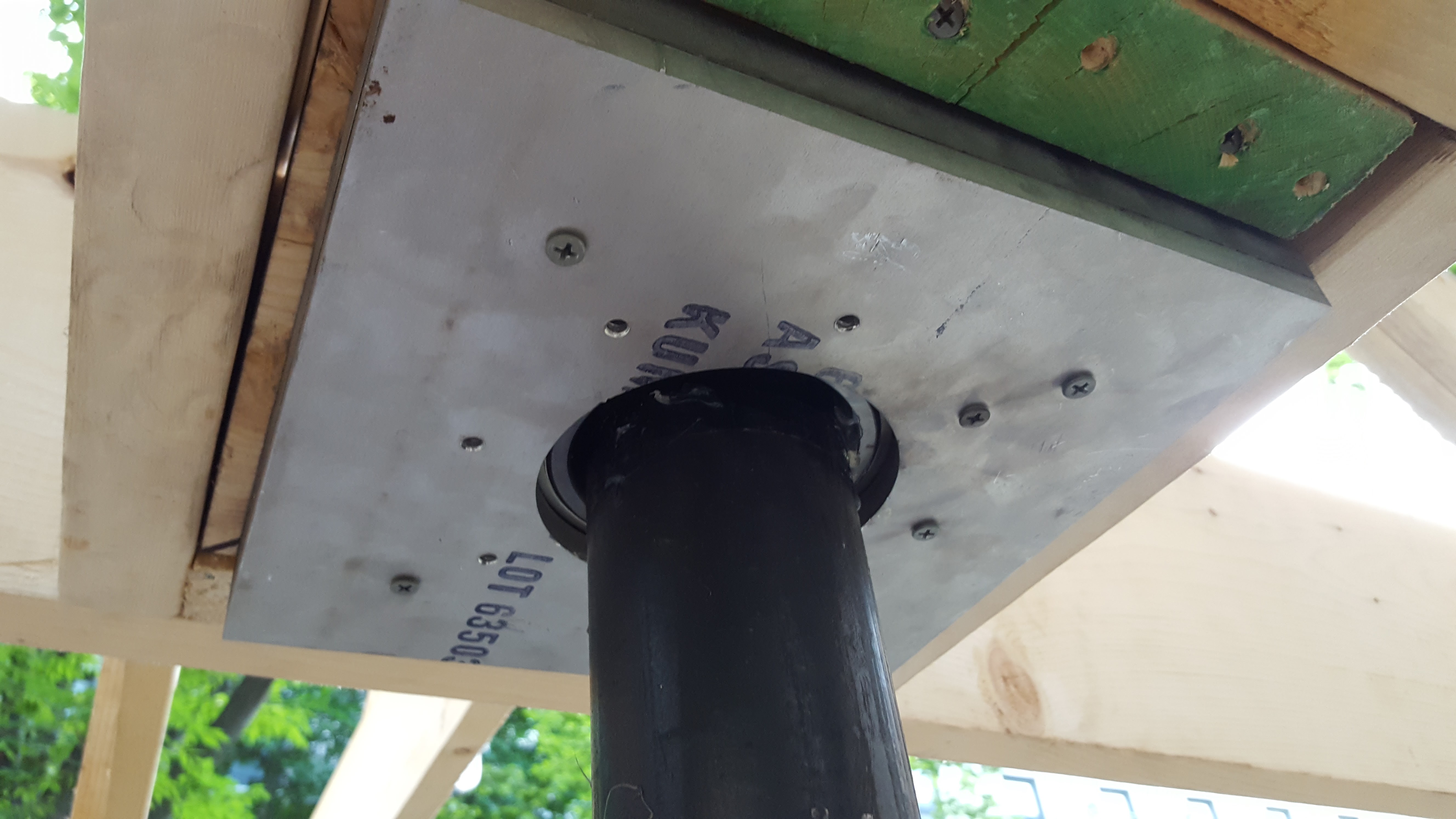 |
Mounting the Bearings
In order to mount the bearing, we had to figure out a way to attach the outer race to the structure. I came up with the idea to press fit the outer race to an aluminum plate, and then screw the aluminum plate to the wooden structure. The aluminum plate is cut on a waterjet machine with a hole that is slightly smaller than the outer race. We then put the plate onto a grill and heated up. The two are then pressed together with some elbow grease and hammering.
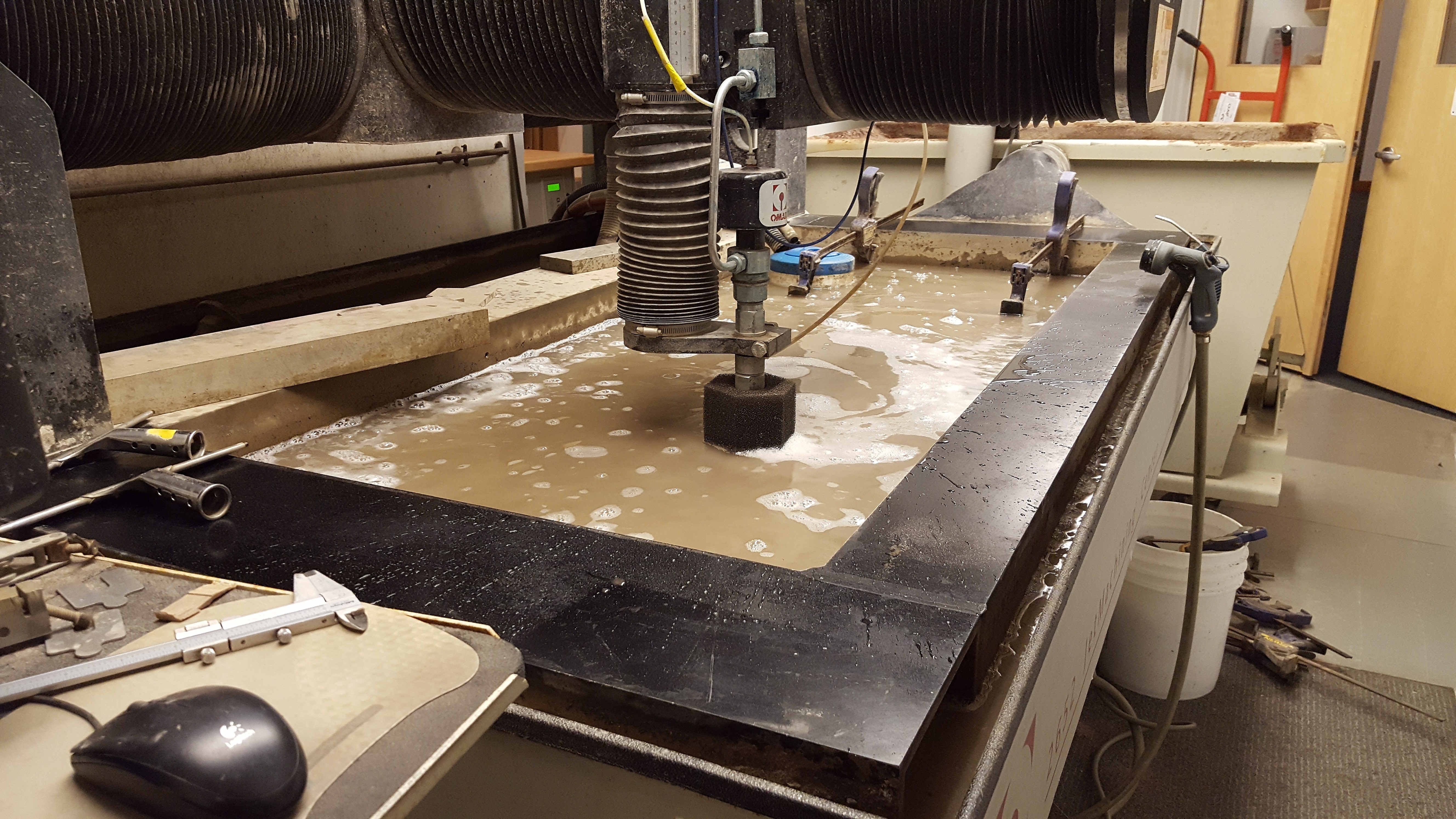 |
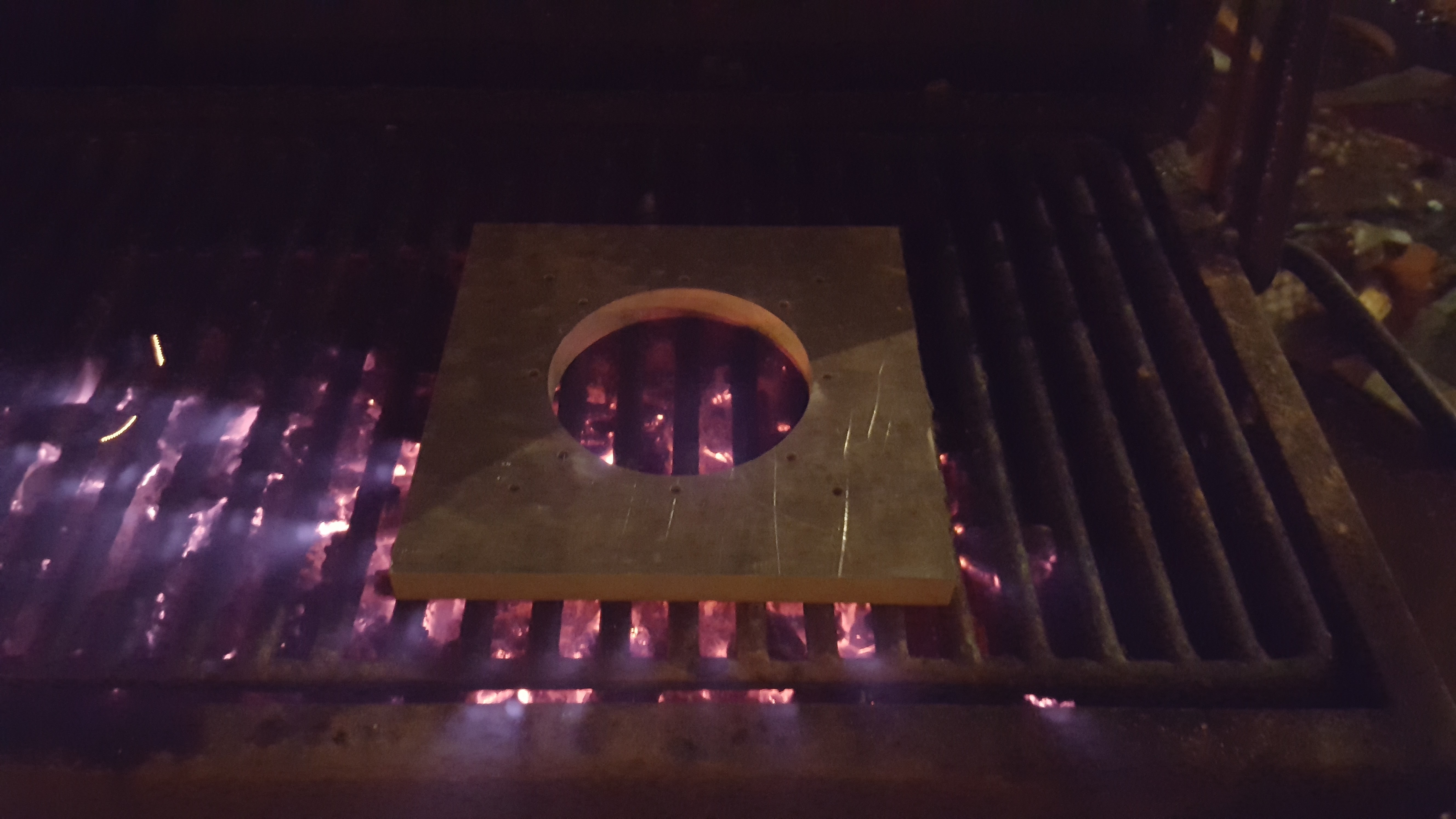 |
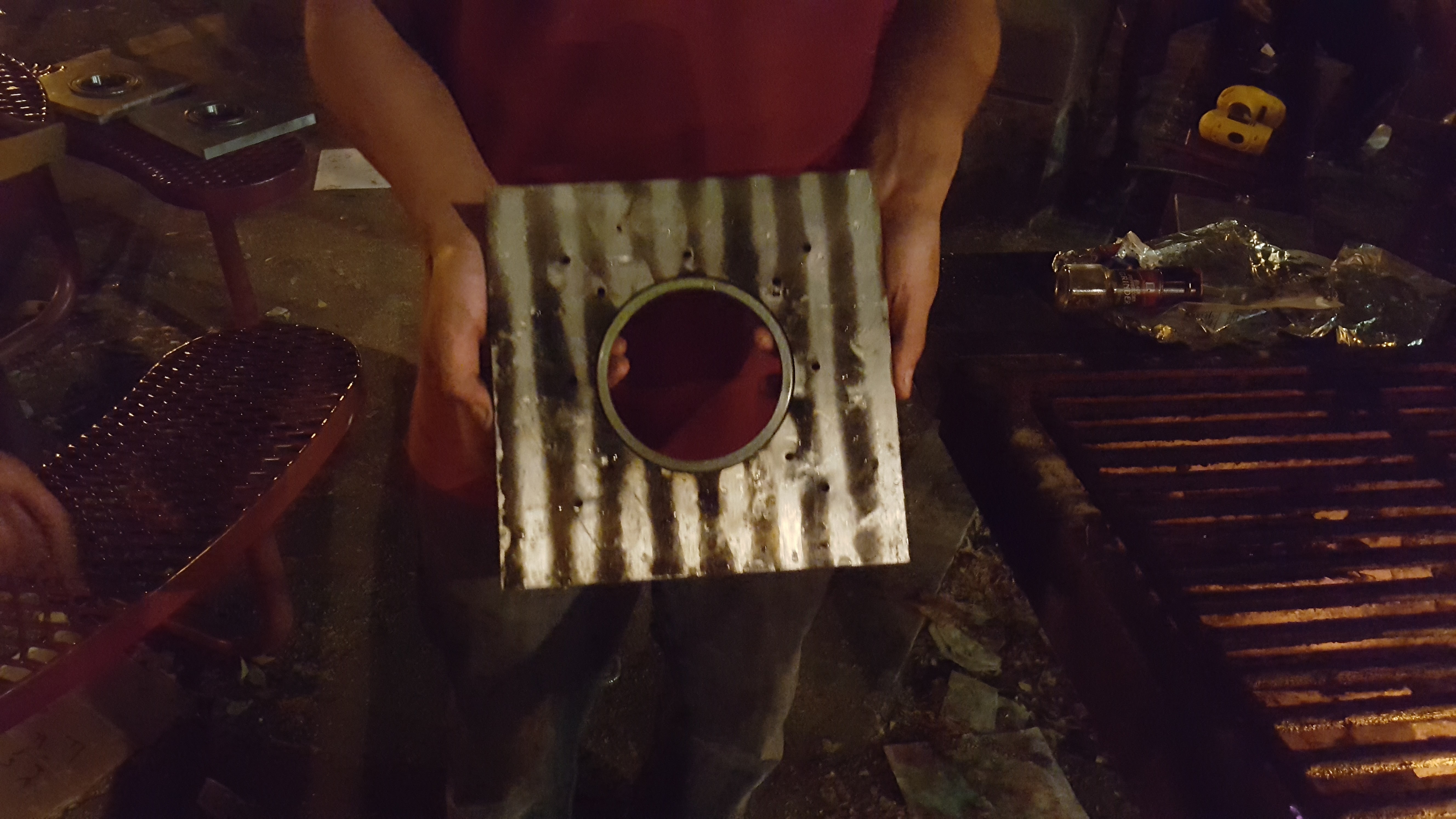 |
Lighting
We installed some LED strips along the spinning top to add some flavors. The LEDs are synced with the spinning speed of the device. As #YOLO spins faster, the LEDS changes color faster or “more rainbowy” (as our designer put it). The spinning speed of the device is measured by an accelerometer placed at the edge of one of the spinning arm. An arduino acts as the central brain reading the accelerometer and controlling the signal to the LEDs.
To power the LEDs on the device, wires run from the bottom to the top of the device inside the hollow metal pipe. A small hole is cut in the pipe using a dremel cutting disk. A slip ring is installed at the top, so that the wires don’t get bundled up as the carousel spins.
 |
 |
Operation
The ride supports up to 4 riders at the same time, and it’s recommended that the ride is evenly loaded. Four people sits in the hanging seats, and two people pushes on the vertical bars. As #YOLO gets to max speed, determined by how fast the two people can push it, the pushers duck down and let the ride continue to spin. The pushers should be careful to stay low to avoid the pushing attachments swinging around and hitting them in the back of the head. The ride is actually quite frictionless and will take a long time for it to come to a full stop. As the ride slows down to a manageable speed, the pushers stand up and push in the opposite direction of the spin to act as a brake.
Here’s a video of our lovely volunteers testing out the device:
